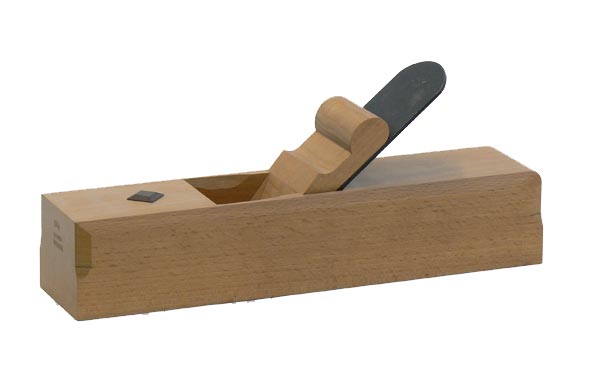
Talking with Larry Williams and Bill Clark is like time travel, because these two know more about the history of hand planes than anyone I have yet encountered. They own a business together that makes and sells wooden hand planes that are virtual replicas of planes made more than a century ago. On the other hand, they both acknowledge that, without the Internet, they could never pursue their mutual passion. The technology allows them to market their planes nationally in a way they never could otherwise, but it also helps them pursue the intense research they both do. In some ways, admits Bill, “planes are a business expense for the research.”
The historical stories and facts they have been able to gather, and build into their planes, is impressive. I mentioned Bailey planes, and they related the story of how Stanley bought out Bailey two or three times because the two didn’t get along. Stanley would buy the designs and then Bailey would go off and make new designs to compete. In fact, Bailey’s second line of planes was called Defiant and Bill doesn’t think that was an accident.
So why wooden hand planes instead of metal? That was the wrong question to ask these guys because they have a lot of reasons (and the historical documentation to back it up). Larry points out that a wooden plane weighs less, provides a better grip and gives the woodworker a better feel for plumb and level. The thing that most people don’t realize, he says, is a well-made wooden plane will last just as long, and wear just as long, as a metal plane.
This is a full set of hollows and rounds. Larry explains that most woodworkers would only have a half set because they could reproduce almost any moulding they could want with just nine of these.
A metal plane, he argues, is actually more prone to certain kinds of wear because it creates more friction and more heat that transfers to the sole. The mouth of the wooden plane, says Larry, is the one place where you can get some wear, but if the blade is adjusted correctly, that shouldn’t be a problem. “Actually, what’s attributed to wear on old wooden planes is generally hamfisted tuning,” he adds in no uncertain terms.
Another thing most folks don’t understand about wooden hand plane design is that many features from the old planes were there for a reason. For example, coffin-shaped wooden planes encourage moisture movement through the body of the plane, giving more consistent finish in the workpiece. “We won’t change a feature until we understand what it was for,” says Larry. That’s why so many of their planes are not merely great woodworking tools, they are also historically accurate.
Remaining true to historical materials also makes sense for them. The old wooden planes were made primarily from beech and cherry. It turns out those are ideal materials even today. Every once in a while, however, they will get some exotic requests. Bill actually made a couple of smoothing planes from ebony because some customers wanted them. The first trick was finding a piece of ebony big enough, and the second trick was reducing the moisture content in the wood: that took two to three years.
The two of them have been working together for about 20 years, but have only been doing the planes for about seven years. Before that, they did general contracting. But the intense increase in the demand for hand tools over the last decade has certainly been good for business. “People are discovering how efficient hand tools are. When you start dealing with the setup time of a machine versus being able to grab a tool and do it in less time than the setup time, all of a sudden it starts making a lot of sense,” says Larry.
Larry and Bill write articles from time to time when they think something needs clearing up about historical notions of planes. Lately, they’ve been contemplating a piece on why sash planes are always found in pairs. They warned us that hand planes can become an obsession. “If you ever get started on it, watch out,” say Larry. “It’s a slippery slope,” adds Bill.
– Bob Filipczak







